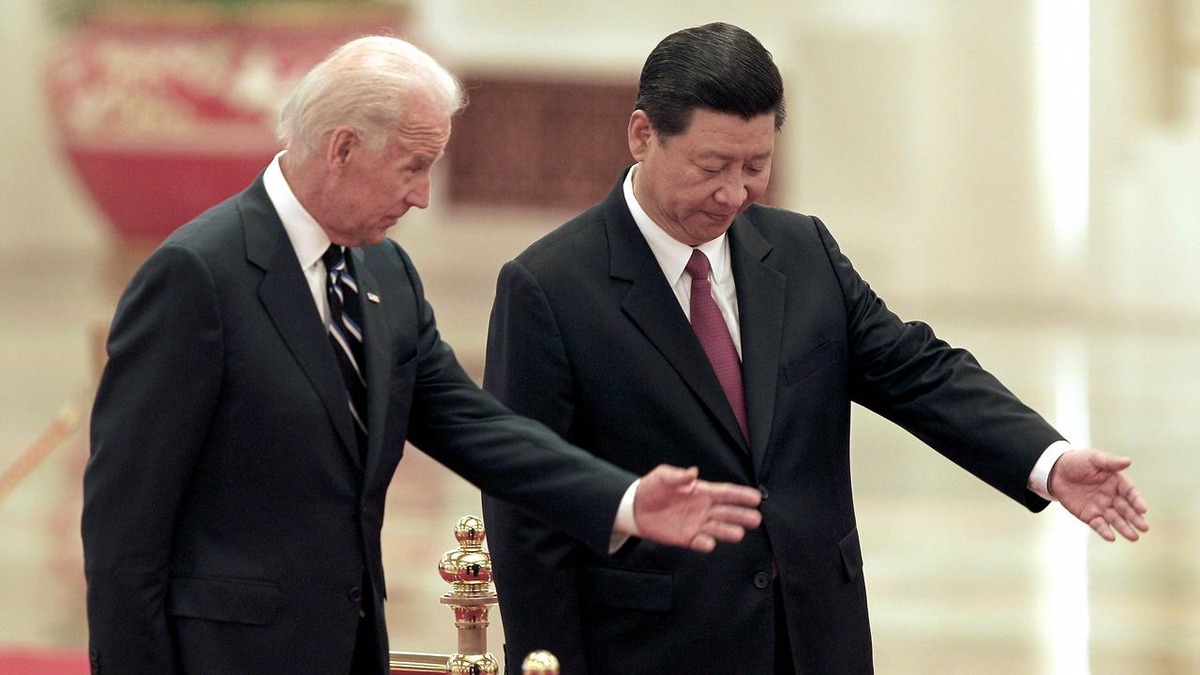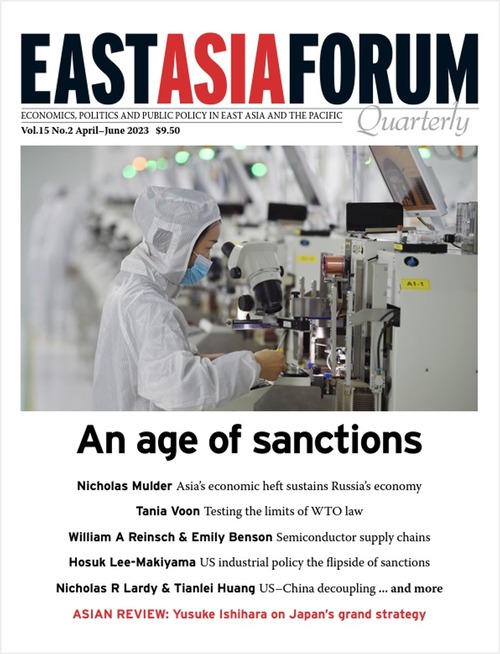US-China trade
Is US–China decoupling heading in a dangerous direction?
Published 20 June 2023
Bilateral trade between the US and China may have hit record levels in 2022, but its expansion is slowing as both countries redirect their investments to elsewhere and continue to decouple technologically. While the states' security competition could lead to significant economic losses, the political reality in both capitals is making rational policy formulation extremely difficult.
The US and Chinese economies are closely interconnected, but their ties are eroding. Despite record levels of US–China bilateral trade in 2022, the trading relationship is becoming less interdependent. Rising tensions between Washington and Beijing are driving US and Chinese investors away from each market.
Perhaps the most consequential aspect of US–China decoupling is in technology. Security competition between the United States and China is increasingly embedded in approaches to domestic industrial and technological development. This tech war will hurt both economies and have profound global implications.
Bilateral trade between the United States and China continues to expand despite the trade-war tariffs and escalating tech restrictions that the United States has imposed on China. But bilateral trade expansion is slowing and is growing at only one-fifth the pace of the overall US trade expansion. The share of US imports coming from China has declined, while China has shifted some imports of foreign goods away from the United States. The composition of US–China bilateral trade has also shifted away from goods with the highest tariffs.
Data on bilateral trade alone does not show the full picture of US–China commercial ties. Since the tariff war began, China’s direct investment in Southeast Asia has skyrocketed— reaching US$128 billion in 2020. US imports from Southeast Asia are also expanding rapidly.
Cumulative direct investment in China by US firms reached US$124 billion in 2020, according to data from the Office of the United States Trade Representative. But the 25th annual China Business Survey by the American Chamber of Commerce in China shows that a declining share of US companies see China as an investment priority because of rising tensions, a lack of regulatory consistency in China and rising costs of labour.
But China’s share of the imported content in Vietnam’s exports nearly doubled from 2017 to 2021. Similarly, Chinese firms elsewhere in Southeast Asia source a large share of the parts and components in their US exports from China. The Chinese content of US imports from Southeast Asia is likely on the rise, offsetting the slowdown in direct US imports from China.
The survey also shows that though most US firms operating in China plan to stay, a rising share are considering shifting supply chains out of China— including Apple and Google.
Prospects of US investment in China are clouded by potential US restrictions on outbound investment to China. The Biden administration is concerned that US investors may be helping to advance Chinese technology in critical sectors and is developing a mechanism to constrain the flow of US investment into China. But because US firms constitute a relatively small portion of total foreign direct investment, such a screening scheme will only be effective if other states are involved. The difficulties of convincing others to develop similar programs may be causing the delay in the launch of a US outbound investment screening scheme.
Private and state-owned Chinese firms are facing greater scrutiny in the United States. The Committee on Foreign Investment in the United States has seen its investigations involving Chinese investors surge since 2021. Among all jurisdictions, investors from China face the most scrutiny. The most recent high-profile case involves TikTok, whose CEO was recently grilled by the US Congress. The company now faces the risk of being banned in the United States unless it splits from its Chinese parent company ByteDance.
US–China decoupling in technology is undoubtedly intensifying. Beginning with Trump’s restrictions on US exports to Huawei in 2018, the United States has been stepping up its tech restrictions on China in the past five years. By the end of 2022 about 400 Chinese persons on the Specially Designated Nationals and Blocked Persons list were prohibited from engaging in any transactions involving US persons.
In March 2023, 665 Chinese companies on the US Entity List were subject to restrictions on the flows of certain technology and goods from the United States. China responded with its own Unreliable Entity List in September 2020. So far only two US aerospace and defence companies are listed and prohibited from trading with or investing in China.
US–China technological decoupling escalated in September 2022 when US National Security Advisor Jake Sullivan announced a profound shift in US economic policy on China. Rather than designing export restrictions to keep China’s critical technologies a generation behind that of the United States, the US objective is now to freeze China’s current level of technological development. As the US tech frontier continues to expand, the gap between the two countries would widen, causing China to fall further behind.
In October 2022, the Biden administration announced export restrictions on certain equipment and services to Chinese semiconductor companies, aiming at slowing China’s ability to produce advanced chips—a US national security concern. Japan and the Netherlands have joined the US effort in restricting exports of semiconductor manufacturing equipment to China.
Given the stated US goal in maintaining ‘as large of a lead as possible’ in semiconductors, quantum computing, artificial intelligence and other critical sectors, it is not surprising that China’s President Xi Jinping has stated that the United States attempts to contain, encircle and suppress China. China is now pouring hundreds of billions of dollars into cutting-edge technologies to achieve self-sufficiency. The West’s economic sanctions following Russia’s aggression against Ukraine worry Chinese leaders who fear similar sanctions could be applied to China if it pursues reunification with Taiwan.
Technological decoupling raises serious concerns about global growth in the short and long term. A 2021 IMF study identifies three direct channels where technological decoupling can affect global growth—reduced global trade flows, misallocation of resources and less cross-border knowledge diffusion.
Together with trade fragmentation and ‘friend-shoring’, technological decoupling can lead to significant economic losses globally. The drive for self-sufficiency is costly and success is not guaranteed. Reining in technonationalism is in the United States and China’s interests, but the political reality in both capitals is making rational policy formulation extremely difficult.
© The Hinrich Foundation. See our website Terms and conditions for our copyright and reprint policy. All statements of fact and the views, conclusions and recommendations expressed in this publication are the sole responsibility of the author(s).











